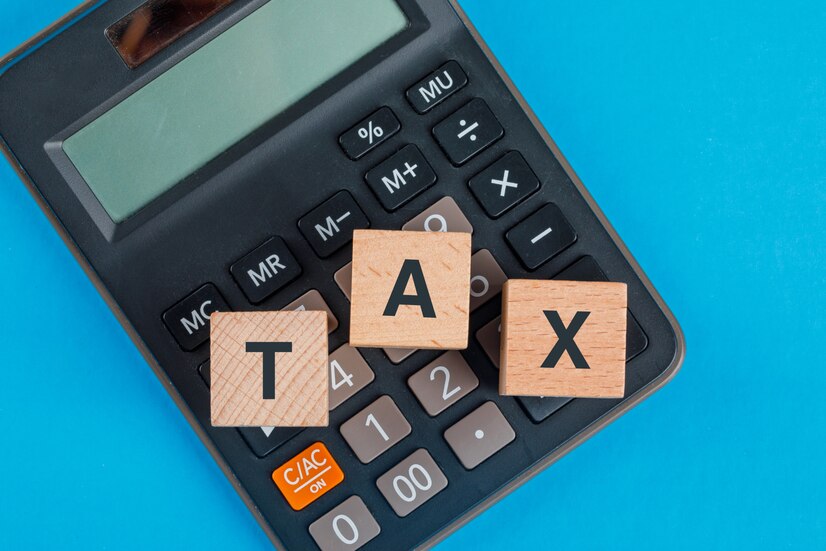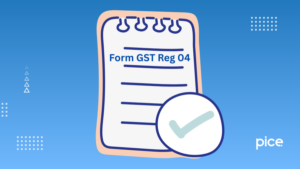Annexure IV GST: Navigating Compliance for Construction Projects
- 13 Aug 24
- 11 mins

Annexure IV GST: Navigating Compliance for Construction Projects
Key Takeaways
- Annexure IV is crucial for businesses in construction and manufacturing, serving as a key document for transparent GST compliance and reporting.
- It captures comprehensive details about goods produced, raw materials consumed, and the stages of construction, ensuring accurate tax assessment.
- Properly documenting every transaction and activity in Annexure IV helps in claiming input tax credits, thereby reducing the overall tax burden.
- The detailed records maintained in Annexure IV streamline audits and inspections, facilitating smoother compliance processes.
- Beyond compliance, Annexure IV aids in strategic planning and decision-making by providing insights into construction activities and expenses.
In the complex landscape of GST compliance, Annexure IV emerges as a pivotal document, especially for businesses engaged in construction and manufacturing. It's an essential tool for transparently reporting production and supply activities to the tax authorities. This blog delves into Annexure IV within the context of ongoing construction projects, highlighting its significance, components, and how to ensure compliance effectively.
What is Annexure IV in GST?
Annexure IV is a detailed document required under the GST framework, specifically designed for businesses engaged in the manufacturing sector. This annexure is part of the broader GST returns and documentation process and serves a critical purpose. It requires manufacturers to report comprehensive details regarding the goods produced, including the quantities of finished goods and the raw materials consumed during the manufacturing process.
The primary aim of Annexure IV is to ensure that there is a clear and transparent record of manufacturing activities, enabling the GST authorities to accurately assess the tax liabilities based on the goods produced. This document is instrumental in bridging the gap between production and taxation, providing a systematic way to account for the goods that are manufactured and ensuring that the correct amount of tax is levied on them.
Understanding and accurately completing Annexure IV is crucial for manufacturers to remain compliant with GST regulations, avoid penalties, and ensure a smooth operation of their business within the legal framework of India's tax system.
When navigating the GST framework, businesses involved in the construction sector must pay careful attention to Annexure IV. This document is essential for maintaining compliance and transparency in reporting various aspects of construction projects. Here’s a deeper look into the key components that Annexure IV encompasses for these businesses:
Project Details
Ongoing Project Information: This includes comprehensive data on the current construction project. It captures everything from the project's initiation, outlined through the commencement of the project, to detailed descriptions of project units. This information forms the foundation of Annexure IV, serving as a reference point for tax authorities to understand the scope and scale of construction activities being undertaken.
Commencement and Progress: The specific dates marking the beginning of construction activities are crucial. They not only help in tracking the progress of the project but also in determining tax obligations as they evolve over the construction period.
Construction Activities
Detailing Service Activities: Annexure IV requires a meticulous record of all construction activities. This includes the construction of apartments, houses, and any other structures, encompassing both residential and commercial projects. The document should detail the stages of construction, highlighting significant milestones and the percentage of construction completed at each stage.
Forms of Construction: Whether the project involves conventional construction, prefabricated elements, or innovative construction techniques, each form of construction must be accurately documented. This diversity in construction methodology has implications for tax calculations and compliance.
Supply Details
Invoices For Supply: Every transaction involving the supply of construction materials must be backed by official invoices. These documents are pivotal for ensuring transparency and accuracy in the tax on construction materials. They serve as verifiable records that detail the nature, quantity, and cost of materials supplied, forming a critical part of the GST compliance process.
Tax Implications: The proper documentation of supplies allows businesses to accurately calculate GST owed on materials. It also aids in the claiming of input tax credits, where businesses can offset the GST paid on inputs against their tax liabilities.
Cost Accounting
Role of a Cost Accountant: A cost accountant plays a vital role in accurately determining the costs associated with the project. Their expertise is essential in reporting the percentage of construction completed and its corresponding costs. This includes direct costs like materials and labor, as well as indirect costs such as overheads.
Accuracy in Reporting: The cost accountant ensures that all financial records are precise and reflect the true cost of construction activities. This accuracy is crucial for determining tax liabilities and for the strategic financial planning of the project.
Regulatory Compliance
Construction Permit: This component involves documenting the acquisition of all necessary permits for construction. The construction permit serves as a legal authorization for the project, ensuring that the construction complies with local laws, regulations, and standards.
Jurisdictional Commissioner: Details pertaining to the jurisdictional commissioner overseeing the project must be accurately reported. The commissioner's role involves monitoring compliance with GST laws and regulations. Proper documentation and communication with the jurisdictional commissioner help in avoiding legal complications and ensuring smooth progress of the construction project.
Each of these components plays a significant role in the successful completion of a construction project under the GST regime. By diligently maintaining records and ensuring transparency in every aspect of the project, businesses can navigate GST compliance effectively, avoiding penalties and fostering a conducive environment for growth and development in the construction sector.
How to Fill Annexure IV
Filling Annexure IV requires meticulous attention to detail, ensuring every aspect of the construction project is accurately reported:
- Gather Comprehensive Project Data: Start with a detailed collection of data on your ongoing project, including commencement dates, construction permits, and project units.
- Maintain Accurate Invoices: Keep a record of all invoices for supply related to the construction project. This is vital for reporting the supply of construction materials.
- Work with a Cost Accountant: Engage a cost accountant to accurately calculate the cost and percentage of construction completed. Their expertise is invaluable in ensuring compliance.
- Report to the Jurisdictional Commissioner: Ensure all details are accurately reported as per the guidelines of the jurisdictional commissioner overseeing your area.
- Review Before Submission: Double-check all entered data for accuracy, focusing on the tax on construction materials and the completion of construction activities.
💡If you want to pay your GST with Credit Card, then download Pice Business Payment App. Pice is the one stop app for all paying all your business expenses.
The Role of Annexure IV in GST Compliance

Annexure IV is not just a formality but a cornerstone of GST compliance, especially for businesses in the construction sector. Its role extends beyond mere documentation to facilitating a transparent, accountable, and efficient tax compliance framework. Here's an expanded view of how Annexure IV plays a pivotal role in ensuring GST compliance for construction projects:
Ensuring Accurate Tax Calculation
The detailed reporting requirements of Annexure IV allow for precise calculation of GST liabilities. By documenting every aspect of the construction process, from the supply of materials to the completion stages of construction, businesses can accurately determine their tax obligations. This level of detail prevents under- or overestimation of taxes due, ensuring that businesses only pay the amount rightfully owed to the government, thereby safeguarding against potential financial discrepancies or legal challenges.
Facilitating Input Tax Credit Claims
One of the key benefits of the GST system is the provision to claim input tax credits, which can significantly reduce the overall tax burden on businesses. Annexure IV plays a crucial role here by requiring detailed records of all purchases and expenses related to the construction project. These records are essential for businesses to substantiate their claims for input tax credits on the GST paid for construction materials, services, and other inputs. Accurate and comprehensive documentation ensures that businesses can maximize their input tax credit recovery, directly impacting their profitability and cash flow.
Promoting Transparency and Compliance
The comprehensive nature of Annexure IV fosters transparency in the business's operations. By mandating detailed documentation of every transaction and activity, it provides tax authorities with a clear view of the business's compliance status. This transparency is critical for building trust between businesses and regulatory bodies, facilitating a smoother compliance process, and reducing the likelihood of audits and inspections.
Streamlining Audits and Inspections
In the event of an audit or inspection by GST authorities, the detailed records maintained in Annexure IV can significantly streamline the process. Auditors can easily verify the accuracy of tax payments and the legitimacy of input tax credit claims against the documented records of construction activities and supplies. This can expedite the audit process, minimize disruptions to the business, and reduce the risk of penalties or additional tax assessments.
Reducing Disputes and Enhancing Legal Certainty
The detailed and systematic documentation required by Annexure IV can play a crucial role in reducing disputes between businesses and tax authorities. In cases where discrepancies or disagreements arise, the comprehensive records serve as a reliable reference point for resolution. This not only enhances legal certainty for businesses but also contributes to a more efficient dispute resolution process, saving time and resources for both parties.
Facilitating Strategic Planning and Decision Making
Beyond compliance, the insights gained from the detailed documentation in Annexure IV can aid businesses in strategic planning and decision-making. By analyzing the detailed records of construction activities and expenses, businesses can identify areas for cost optimization, improve budgeting accuracy, and enhance operational efficiency. This strategic advantage underscores the broader significance of Annexure IV in not just meeting compliance requirements but in driving business growth and sustainability.
In conclusion, Annexure IV is instrumental in shaping a robust GST compliance framework for the construction sector. Its role extends from ensuring accurate tax calculations and facilitating input tax credits to promoting transparency and strategic business planning. By meticulously adhering to the requirements of Annexure IV, businesses can navigate the complexities of GST compliance, safeguard against legal risks, and capitalize on financial opportunities.
Conclusion
Annexure IV is more than just a document; it's a comprehensive reporting tool that ensures businesses in the construction sector remain transparent and compliant with GST regulations. By accurately filling out Annexure IV, businesses not only adhere to the legal requirements but also streamline their tax reporting processes, paving the way for successful completion of construction projects and sustainable business growth.



















